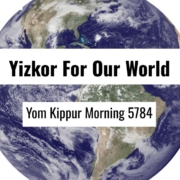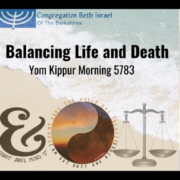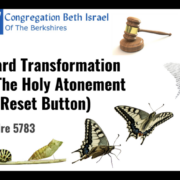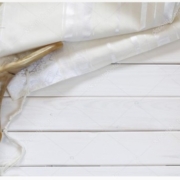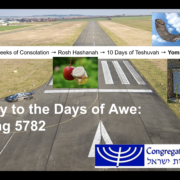On Kol Nidre, teshuvah, balance, “the holy atonement reset button,” and more.
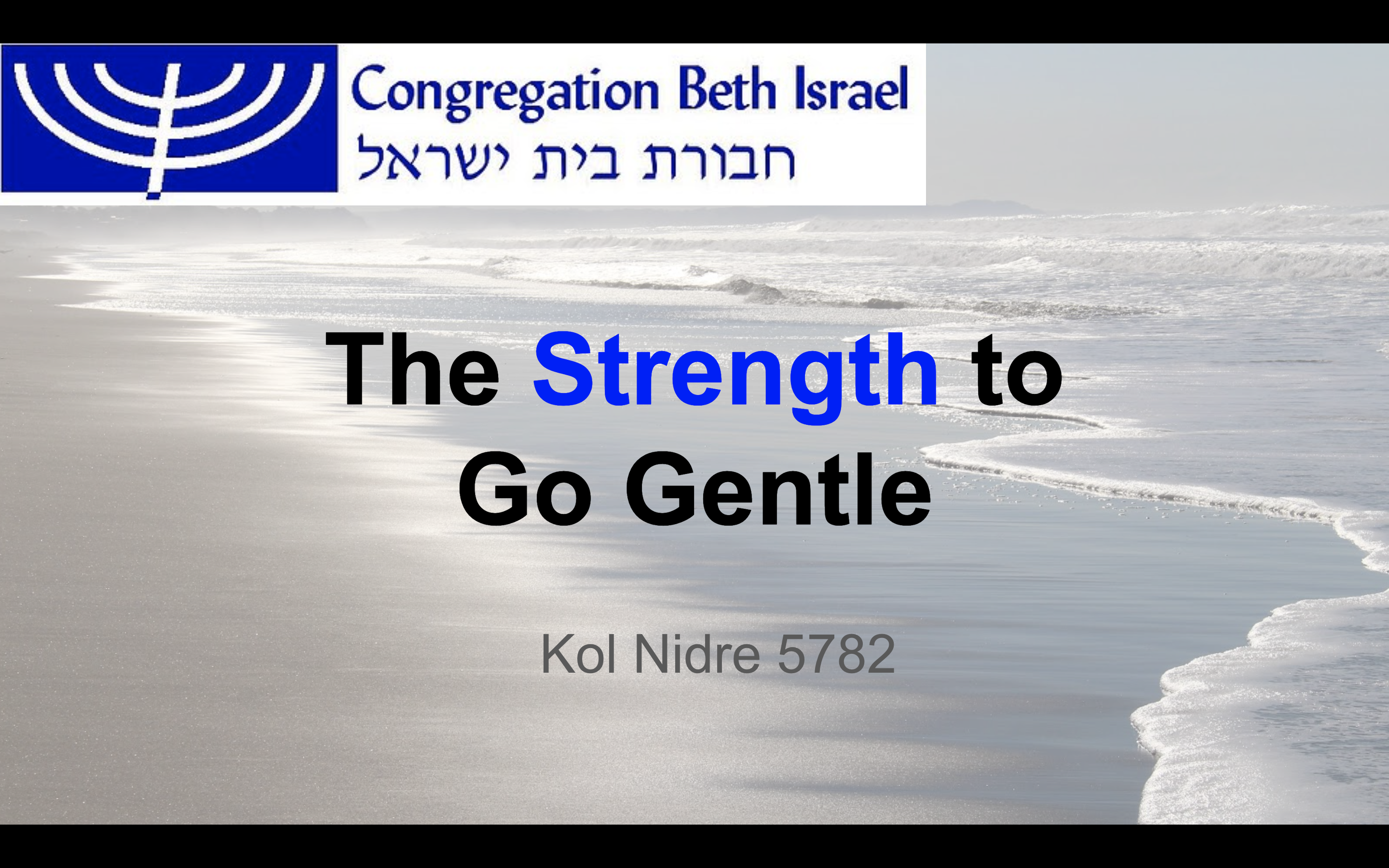
Did you know that Shakespeare wrote King Lear while quarantining for possible exposure to the Bubonic plague? Possibly also Macbeth and Antony and Cleopatra. I assume all of us wrote at least one great masterwork of literature during the last year. No?
Surely at least we started baking with sourdough during the pandemic, creating spectacular loaves and sharing them on Instagram. Or maybe we reorganized our entire storage system, or finished all the home improvement projects we hadn’t had time to complete before, or learned a new language on Duolingo.
The idea that we were “supposed” to do something great and meaningful during quarantine has become a meme, a running joke. As though that were the way to “win” at lockdown and isolation amid global pandemic. We laugh, but the laughter is uneasy. On some level, maybe we wonder: if I didn’t spend this first 18 months of pandemic doing something I can brag about, am I doing it wrong?
Kol nidrei: all the vows and promises and oaths that we fail to live up to…
Maybe we promised ourselves that 5781 would be the year we would finally start working out, or the year we would actually open those cookbooks, or the year we would learn to bake sourdough or write a screenplay… especially since many of us were sheltering-in-place or working from home, so obviously we had all that spare time, right? And instead it turned out that 5781 was a year that we spent trying to keep ourselves and each other afloat. It was a year that we spent watching millions die, and grieving, maybe grappling with survivor’s guilt. And it was a year that we spent watching some people politicize mask-wearing and vaccination, even questioning whether or not the virus is real.
In some ways, the jokes about sourdough and King Lear feel like gaslighting. They ask us to pretend away the inconceivable awfulness of what we’ve witnessed in the last year. ICUs filling with COVID patients again and again. Crematoria in India working overtime. Vaccine shortages in Asia and Africa, paired with vaccine refusers in our own country. And the climate crisis. And the assault on democracy. Our grief and our fear and our compassion have been in overdrive for so long: many are exhausted, or numb, or overwhelmed. And yet somehow we’re supposed to imagine that we’re supposed to ignore our heartbreak and fear and be productive, and if we failed at that, we’ve missed the mark? As though we needed another reason to feel lousy about ourselves tonight!
But feeling lousy about ourselves misses the point of today altogether. Yes, the liturgy of Yom Kippur reminds us that we missed the mark. Even if we’d spent every minute of the last year trying to pursue justice and act with compassion, human beings make mistakes. But the point isn’t self-flagellation, it’s promising in community (and as a community) that we will try to do better.
My image of God is not the angry teacher who can’t wait to give us demerits for all of our flaws. Yes, we’ll spend these 25 hours searching our souls to find the inner work we need to do to be better. But that’s because our tradition gives us this holy season for introspection, calling us to become — not because God is poised to whack us with a ruler. On the contrary. As we heard right after Kol Nidre, “vayomer YHVH, salachti kidvarecha!” And God says: I forgive you, as I said I would! We use the spiritual tools of prayer and contemplation and song to open our hearts so we can feel that forgiveness and be ready to try again.
This year, I also imagine God saying: hey, be gentle with yourselves. One of my friends said to me, at the start of the long cold pandemic winter, that she was grading herself on a curve this year. Some days she felt able to be productive. Other days, it was all she could do to get through the day. And on those days, she gave herself permission to be as she was. What she called grading on a curve, I think of as being gentle with ourselves.
In times of intense grief, clergy and therapists both say to lower the pressure we put on ourselves. I learned this anew when my mother died and grief fogged my vision. When we’re living with sorrow or uncertainty or trauma (or all of the above), just making it through the day can take all we’ve got. Over the last 18 months of pandemic, we’ve all been in that place, sometimes.
Every year at this season we take a good hard look at our failings, and it’s easy to get stuck there — maybe especially this year. Maybe we didn’t take care of ourselves, or we ate and drank too much. Maybe we gave in to despair and doomscrolling, or we turned a blind eye to the world’s suffering…
Jewish tradition calls us to look clearly at where we missed the mark, and it also calls us not to cling to our perceived shortcomings. God is always ready to forgive. That means that God also forgives us for not baking Instagram-worthy sourdough or writing a novel or becoming fluent in Hebrew during this second pandemic year.
Tonight asks us to hold two competing truths in balance. One: Jewish values demand that we constantly work toward justice and healing for this broken world. And two: when we really make teshuvah (when we turn ourselves around, when we do our inner work), God forgives all of our failings. We need to be able to forgive ourselves.
That doesn’t mean there are no standards and anything goes. Gevurah — our theme for this year — asks us to maintain accountability for ourselves and for others. There are behaviors that are simply not okay. Torah is clear that lying, or cheating, or turning a blind eye to the suffering of others is flat wrong. Tomorrow afternoon’s Torah reading will remind us that God asks us to feed the hungry and care for the powerless, to pursue justice without bias, to love our fellow human beings. That Torah reading also reminds us to offer tochecha, corrective words, if we see our fellow human beings acting unethically — because if we let unethical behavior stand, we become complicit.
And it is also a spiritual truth that sometimes it’s all we can do to get out of bed in the morning. When we’re living with uncertainty or trauma or grief, even the simplest tasks can be monumental. Sometimes we can’t offer tochecha or work toward justice because just completing life’s requisite tasks takes all we’ve got. And that’s okay.
Gevurah also can mean healthy boundaries. Sometimes the boundary we need to draw is one that says: I’m doing the best I can, and this is all I can do, and for now it’s going to have to be enough.
This is part of why we live in community. At any given time, some of us are struggling just to make it through the day. In these times of pandemic and climate crisis, that may be even more true than it used to be. We need to help each other through and remind each other that putting on one’s own oxygen mask first is not only okay, it’s necessary. And at any given time, some of us are doing well enough to make things better for someone else. That’s when it’s our job to be angels for each other, as I said on Rosh Hashanah.
So let’s go gentle into this Kol Nidre night. Let’s promise to help each other through the challenges of 5782. Let’s refrain from comparing ourselves to other people, even if their sourdough loaves look magazine-worthy. And let’s show up with open hearts and commit ourselves to trying to be better, because that’s what we’re here for.
God can forgive us for barely holding it together — even for not being “productive” during the pandemic. Can we forgive ourselves?
This is Rabbi Rachel’s sermon for Kol Nidre this year (cross-posted to Velveteen Rabbi.O)
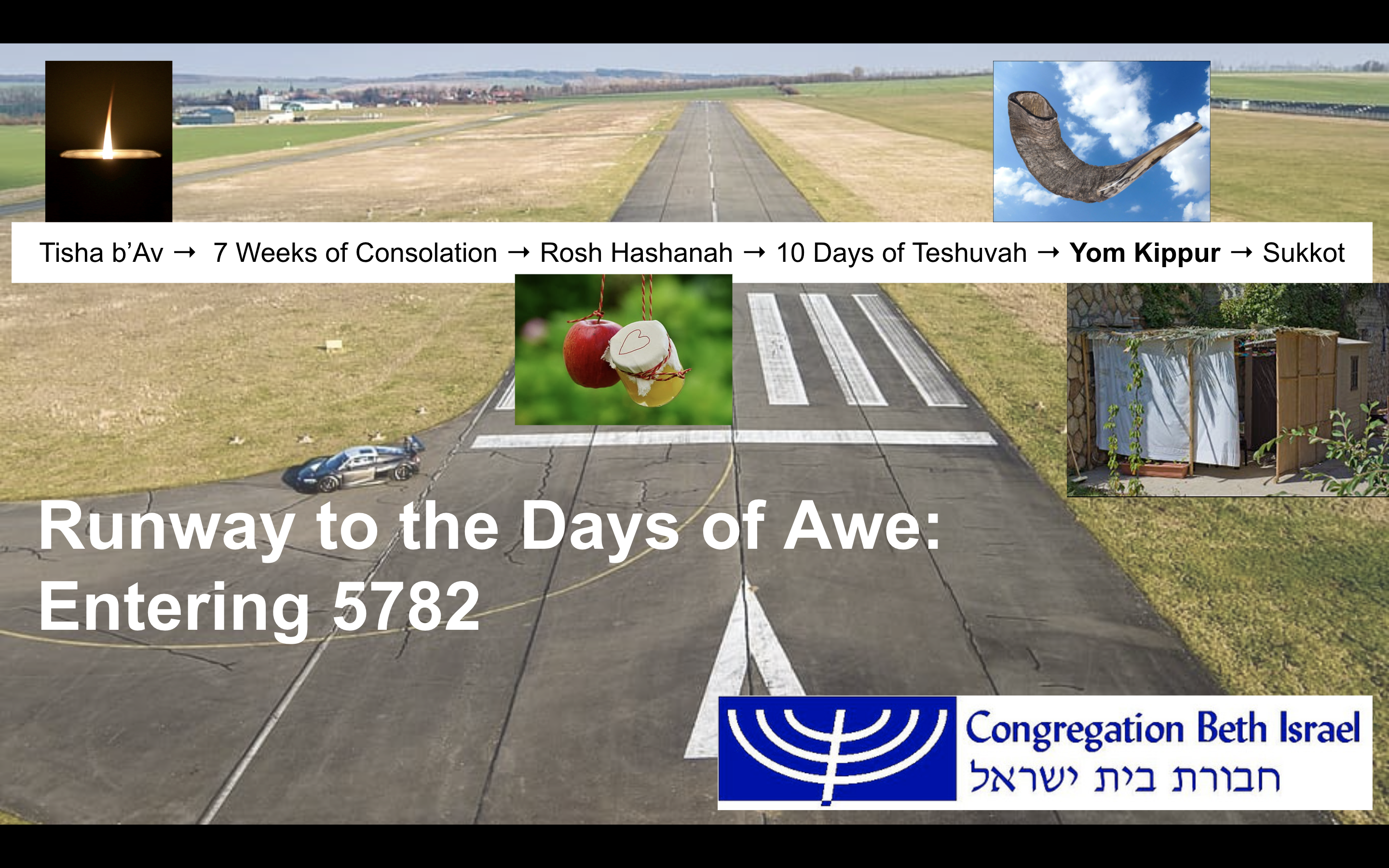
Dear Congregation Beth Israel members and friends,
It was a joy to be with so many of you during Rosh Hashanah. I hope that you are finding meaning in these ten days of teshuvah between Rosh Hashanah and Yom Kippur. Soon we will come together — online and onsite — for Yom Kippur 5782.
For those who are joining us online, here are some suggestions for creating a sacred space in your home. For Yom Kippur in particular, you might want a white tablecloth, a pebble to hold in your hand during Yizkor services, and a photograph or two of those whom you’re remembering at Yizkor — to place beside your Yizkor candle, which you will light just before Yom Kippur and which will burn for about 24 hours. The flame will gutter and go out during Ne’ilah, the closing service that puts a seal on our Yom Kippur.
(Those joining us onsite will have an opportunity to light a Yizkor candle just before Yom Kippur itself begins — you can light one in holy silence while we listen to our new member Robin playing contemplative piano music before Kol Nidre.)
Whether you’ll be with us onsite or online, here is an explanation of some of the holiday’s customs.
Why do we wear white on Yom Kippur?
One way of understanding Yom Kippur is that this is a day of rehearsal for our death. In that understanding, we wear white on Yom Kippur as an approximation of the white garments in which we will be buried. (Some wear a kittel, a simple white cotton robe, worn at sacred times and again at burial.) As members of our chevra kadisha / volunteer burial society know, every Jew is buried in the same simple shroud: plain white garments, the same for everyone rich and poor. Wearing white is a reminder of our mortality and our equality in the eyes of God. On Yom Kippur, wearing white garments that remind us of the garments we will wear when we die can serve as a reminder that we stand every day on the edge of life and death. Tradition teaches us to make teshuvah, to repent / return, the day before our death — which of course is every day, because no one knows when we will die.
Others teach that we wear white on Yom Kippur to be like the angels. We yearn to ascend, to be lighter, more clear and transparent. White is a color of holiness and celebration — that’s why we only have white kippot / yarmulkes available during the holiday season.
Why do some Jews avoid wearing leather on Yom Kippur?
There is a custom on this day of avoiding wearing anything made of leather, because leather requires the death of a living creature. On this day when we make our most fervent teshuvah, we don’t want to be garbed in something which required another being’s death. For this reason, you will see some people wearing canvas shoes, or even rubber Crocs, instead of leather shoes.
Another interpretation is that we substitute soft shoes for leather on this day because we want to remove what protects us. The physical act of wearing soft shoes evokes the emotional / spiritual act of removing the covering from our hearts, allowing ourselves to be vulnerable on this day.
And, of course, you will also see others for whom these interpretations are not meaningful, and who do wear leather, and that’s fine too. Our congregation includes people with many different relationships to halakha (the “way of walking” sometimes translated as “Jewish law”) and to minhag (custom) — and we bring with us many different minhagim (customs) from different communities of origin, too. Some of us wear white. Some of us wear the Jewish version of “our Sunday best” (e.g. the nicest clothes we own). Dress in whatever way will be most meaningful to you.
Why do we wear a tallit at night for Kol Nidre?
Kol Nidre evening is one of the very few times in the Jewish year when a tallit is worn at night. (Though it should be donned before sunset — like the singing of Kol Nidre itself, which also must happen during the day, before Yom Kippur technically begins.) Ordinarily a tallit is only worn when it is light out and we can see the fringes.
There are many reasons why the tallit is worn at this unusual time of day. One is that we sing the Thirteen Attributes (“Adonai, Adonai, El Rachum v’Chanun”) at Kol Nidre services, and there is a very old custom which holds that a tallit should be worn when these are chanted. Another reason is that tallitot are frequently white, and when we wrap ourselves in white tallitot, we can see ourselves as being like the angels, garbed in white light.
For some, a tallit is also worn as a sign of transcendent consciousness; for others the tallit can be a stark reminder of death and the transient nature of physical existence, as the dead are sometimes buried in a tallit in addition to the simple white garments and kittel.
Perhaps we wear tallitot at Kol Nidre because on that night, the “light” of our prayers and our connection with God burns so brightly that it illuminates us from within, and we can see our tzitzit gleaming in that holy light.
A final reason is this: we open the ark for the Kol Nidre prayer, to insure that our prayers are linked to Torah. The person leading the prayers at that time is accompanied by two Torah scrolls. This is done to evoke a court, a “beit din” of three, as a beit din court is needed to annul vows. And when the ark is open, it is traditional to wear a tallit.
One way or another…
May your journey through Yom Kippur this year be meaningful and sweet, and may the holiday get you to where you need to be.
Sending blessings your way —
Rabbi Rachel
[youtube https://www.youtube.com/watch?v=lwH0sNVtr9s]I gave my sermon “live” on Zoom in realtime, and also pre-recorded it to go live with this blog post around the time I was offering it. If you prefer to watch the sermon, it’s above (and here on YouTube.) If you prefer to read it, the text appears below.
The first things I saw on the tarmac at José Martí international airport were palm trees and military vehicles. That’s when my friend Rabbi Sunny, the head of Cuba America Jewish Mission, reminded us not to photograph soldiers — in fact, not to photograph anything at all until we had cleared the airport, just to be on the safe side. Right, I thought. I’m in a Communist country. Note to self, don’t photograph the army.
Last November, with Temple Beth-El of City Island in the Bronx and with Cuba American Jewish Mission, some CBI members and I spent ten days traveling around Jewish Cuba, from Havana to small cities and towns across the countryside.
Everywhere we went, we brought bags of medical supplies: everything from aspirin, vitamins, and prescription medications to anti-fungal cream and tubes of toothpaste. The synagogues there run pharmacies, and they make these pharmacy supplies available to anyone in need, whether or not they are Jewish. When we arrived, there had not been a mission like ours in six months, and their pharmacy shelves were close to bare.
Havana is incredibly beautiful. The sea crashes up against the wall on the Malecon, the main thoroughfare. One day we saw people clustered at that wall, throwing roses into the sea in remembrance of Camilo Cienfuegos, who died in a plane crash over the sea after the revolution. The sunlight was golden on stately buildings with sometimes cracking plaster and peeling paint. There was extraordinary music, everywhere. Young musicians there learn music on the state’s dime; they play in bands and on rooftops and in the streets. It’s facile to say that when one lives with hardship, the gifts of music and of spiritual life are more palpable. But I kept having that thought anyway.
As we moved deeper into the countryside, we started to encounter people who would come up to us with a hand out. They weren’t asking for money. They were asking for soap or shampoo. Everyone in Cuba is guaranteed health care, which is pretty extraordinary. But once we left the city for the provinces, a lot of people didn’t have soap. “Rite Aid or Walmart is like a fantasy to us,” said one person who had traveled abroad and had seen American big-box stores and pharmacies.
I’ve thought of that often since the pandemic began. And when Stop and Shop in North Adams started running out of things, early-ish in the pandemic — you remember: for a while there, we couldn’t buy flour, or dried beans, or toilet paper — I thought of the mostly-empty shelves in the Cuban stores we visited.
In the spring when here in the US we faced simultaneous food shortages and produce rotting in the fields, I remembered stories of Cubans going hungry after the Soviet Union fell. They told us about eating grass to try to fill their bellies while citrus fruits rotted in the fields because there was no gasoline to transport them. And I thought of how our Cuban cousins must be doing now, as the combination of pandemic and trade embargo keeps their shelves even emptier, and keeps their Jewish cousins from abroad away, with our tzedakah and our care and our desperately-needed duffel bags of aspirin and soap.
And yet when I think of the Cuban Jews we met last fall, what I remember is not what they didn’t have, but what they did: their warmth and their kindness, their connectedness and their pride. I remember the music, everywhere. I remember their beautiful synagogue sanctuaries: the Patronato in Havana, which seemed plucked right out of the 1960s just like the classic cars that serve as taxis, and the beautiful little painted synagogue in Santa Clara where we celebrated the coming-of-age of a Cuban bat mitzvah — rebuilt with tzedakah from the Cuba America Jewish Mission and travelers like us.
Most of all, I remember their love. One day we visited Rebecca Langus in the provincial city of Cienfuegos. The entire Jewish community there is eighteen people. They meet for services in her living room, on white monobloc plastic chairs that otherwise sit stacked on her tiny mirpesset next to her laundry line. She teaches the Hebrew school, which is currently three children, using books donated by Jewish visitors from abroad, like us. She works tirelessly to keep her community alive. After her prepared remarks, the four rabbis on the trip chatted with her. We asked her how she does it, and what gives her hope.
“Everything I do, I do for love,” she said simply. That could not have been more clear: her love for her community, for our shared traditions, for Jewishness itself, shone from her like light.
She told us that when they meet for Shabbat, they always have a minyan. I thought: there are only fifteen Jewish adults in this city of 150,000. Two-thirds of the Jews in town need to show up if anyone is going to say kaddish. And… they do. And if there is a fuel shortage, which often there is, they catch a ride on a donkey-pulled cart, or they walk. Because of love: for our traditions, for community, for each other.
Love brought the Jews of Cuba together to celebrate a bat mitzvah while we were there. Many walked miles, some for days, because new US sanctions had contributed to another fuel shortage. Our tour bus was able to secure fuel, but most locals weren’t. So they walked. Because it was worth it to them to be there for each other.
I felt that same extraordinary sense of community love on our final stop in Cuba, the Spanish colonial city of Camagüey. That community meets in a rented house, where they have a beautiful tiny sanctuary with a hand-painted ark, and a little social hall where we gathered to learn from them and to share songs together. There are 32 people in the Jewish community there. We sang “Am Yisrael chai” — the people of Israel yet lives! — which took on a new poignancy there, where for so long the state forbade the practice of any religion at all.
That visit to Camagüey was our last day of the trip, and after a meal with the community there, I listened as my friend and colleague Rabbi David — who is fluent in Spanish — asked a young man why he has chosen to stay in Cuba. His answer: sure, he could go anywhere. But the closeness of the Cuban family and community is precious. It is worth more than whatever money he could earn if he were to decide to leave.
Ten days does not make me an expert on the Jews of Cuba. (I suspect that ten years would be insufficient.) But our trip still resonates in me. The Jews I met in Cuba inspired me with how proud they are to be Cuban and to be Jewish. They inspired me in how they show up for each other. Even in a place where for so long it was illegal to practice any religion at all. They inspired me with their love for our traditions, their love for community, their love of country, their love for each other.
The Jews of Cuba live with profound hardship. That was true a year ago; it is even more true now. And yet… when the pandemic began to rage in the US, they reached out to me via Facebook to make sure that we were okay. Because their love and care flows so naturally, even toward we who have so much.
Tonight they too are hearing the words of Kol Nidre, words that release us from the vows we won’t be able to live up to. But I don’t want to be let off the hook for my promise to keep our connections alive across borders and differences. Communist or capitalist, Cuban or American, rich or poor, we are part of one Jewish family.
Because of the pandemic, it will probably be a long time before we can gather together again in person in physical space. And… the pandemic also highlights how deeply interconnected we are, even when we’re apart. Covid-19 spread around the world because the whole world is interconnected: what happens there has an impact here. What happens to me has an impact on you. This is a deep spiritual truth. It’s also a practical one.
And covid-19 is also teaching us other forms of connectedness. Over these pandemic Days of Awe, we’ve davened with members of our community who live in other places… and with far-flung friends and family who maybe never felt connected with our little shul before. What if we keep all of these connections vibrant and alive in 5781? Imagine the strength and hope and courage we could share with each other through the pandemic winter that is coming. We can be there for each other as our Cuban cousins are there for each other — and we don’t have to walk miles to do it: our connectedness is as close as the click of a computer key.
For that matter, we can be there for our Cuban cousins, too. Rabbi Sunny tells me that right now it’s almost impossible to send tzedakah to Cuba. As of this week, a wire transfer sent in July via Panama and Israel has yet to materialize, and a package of much-needed medicines has been missing for sixty days. But we can support the Cuba America Jewish Mission so that when it becomes possible to directly bring help to Cuba again, there are tzedakah dollars to bring.
Talmud teaches that all of Israel is responsible for one another. Our Cuban Jewish cousins live that truth — not because it’s in Talmud, but just because of who and how they are. This Yom Kippur, may we find uplift in the knowledge that under unbelievably difficult circumstances they are praying these words with us too. May we go the extra mile to be there for each other in community, as do our Cuban cousins. And may we find uplift in the knowledge that we share one tradition; that we share one heart; that love connects us all.
This is Rabbi Rachel’s Kol Nidre sermon (cross-posted to Velveteen Rabbi.)

